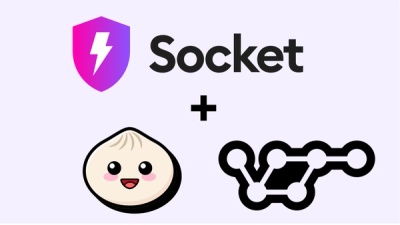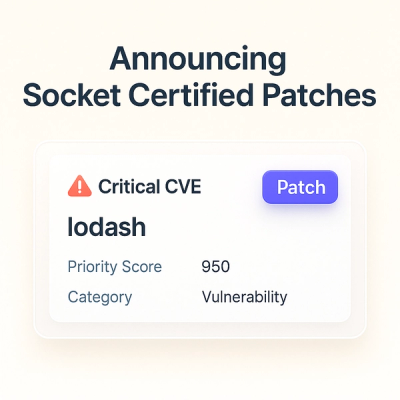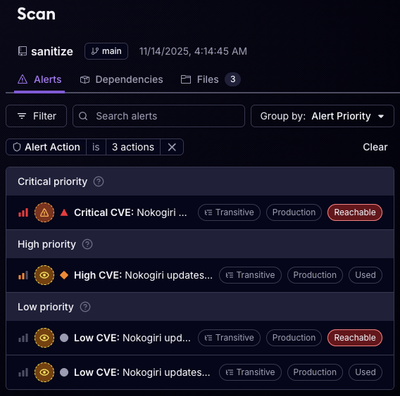
Product
Announcing Bun and vlt Support in Socket
Bringing supply chain security to the next generation of JavaScript package managers
@ordergroove/smi-serve
Advanced tools
smi-serve is a CLI tool to scaffold and run a local dev environment for Ordergroove's Subscription Manager templates.
Before using smi-serve, ensure you have Node.js installed on your system. If not, you can download and install it from nodejs.org. The smi-serve tool requires Node 18 or later.
To initialize the current directory for local Subscription Manager development, run npx @ordergroove/smi-serve init. This will authenticate you with Ordergroove, retrieve your current Subscription Manager assets, and start a dev server.
After initialization, you can restart the dev server with npx @ordergroove/smi-serve.
When you are ready to push your changes, run npx @ordergroove/smi-serve push-theme to deploy your changes to Ordergroove. If the theme you're pushing is live, your changes will be published immediately!
This tool generates a .ogrc.json file to store authentication information. This file should not be committed to source control.
You can run each command with npx @ordergroove/smi-serve [command], e.g. npx @ordergroove/smi-serve init.
To see all available commands and flags, run npx @ordergroove/smi-serve --help. For documentation specific to individual commands, run npx @ordergroove/smi-serve [command] --help.
Initializes the current directory with the assets from your live Subscription Manager theme and starts a dev server. This only needs to be run when you need to retrieve the latest assets from Ordergroove; otherwise you can start the dev server directly with npx @ordergroove/smi-serve serve. To pull new assets, use the pull-theme command.
Starts a development server. This is the default command, so it can also be run by entering npx @ordergroove/smi-serve.
By default it will choose a random available port, but you can customize this with the --port flag.
Presents you with a list of your Subscription Manager themes including your live theme. Selecting a theme will overwrite the files in your present working directory.
Publishes your template changes to your selected Subscription Manager theme. If the theme you're pushing is your live theme, your changes will be published to your live site immediately! You can add the -y flag to automatically agree to the confirmation prompt.
If you have access to multiple merchants, this lets you select a new merchant to be used by the other commands. This can be useful if you manage multiple merchant accounts.
You can use the flag --env staging to make requests against Ordergroove's staging environment. For example, run npx @ordergroove/smi-serve init --env staging to initialize with assets from staging.
Keep in mind that if you use this flag, every command you run must also include it.
Once you run the init command, you can initialize the folder as a Git repository with git init and push to the source control provider of your choice. When you are ready to deploy the changes, run npx @ordergroove/smi-serve push-theme.
Make sure to commit the autogenerated .gitignore, which prevents you from committing the .ogrc.json file to source control. The ogrc file contains authentication tokens and should not be committed.
Ordergroove regularly makes updates to its Subscription Manager templates to fix bugs and add new features. To compare the latest changes with your current template files, first initialize the repo with a source control provider like Git and commit your current template files. You can then re-run the init command with the -f flag to overwrite your files with the latest Subscription Manager template. Use Git's diff tools to compare what has changed and add back any customizations as necessary.
FAQs
Utility to serve a Subscription Manager template locally
We found that @ordergroove/smi-serve demonstrated a healthy version release cadence and project activity because the last version was released less than a year ago. It has 29 open source maintainers collaborating on the project.
Did you know?

Socket for GitHub automatically highlights issues in each pull request and monitors the health of all your open source dependencies. Discover the contents of your packages and block harmful activity before you install or update your dependencies.

Product
Bringing supply chain security to the next generation of JavaScript package managers

Product
A safer, faster way to eliminate vulnerabilities without updating dependencies

Product
Reachability analysis for Ruby is now in beta, helping teams identify which vulnerabilities are truly exploitable in their applications.